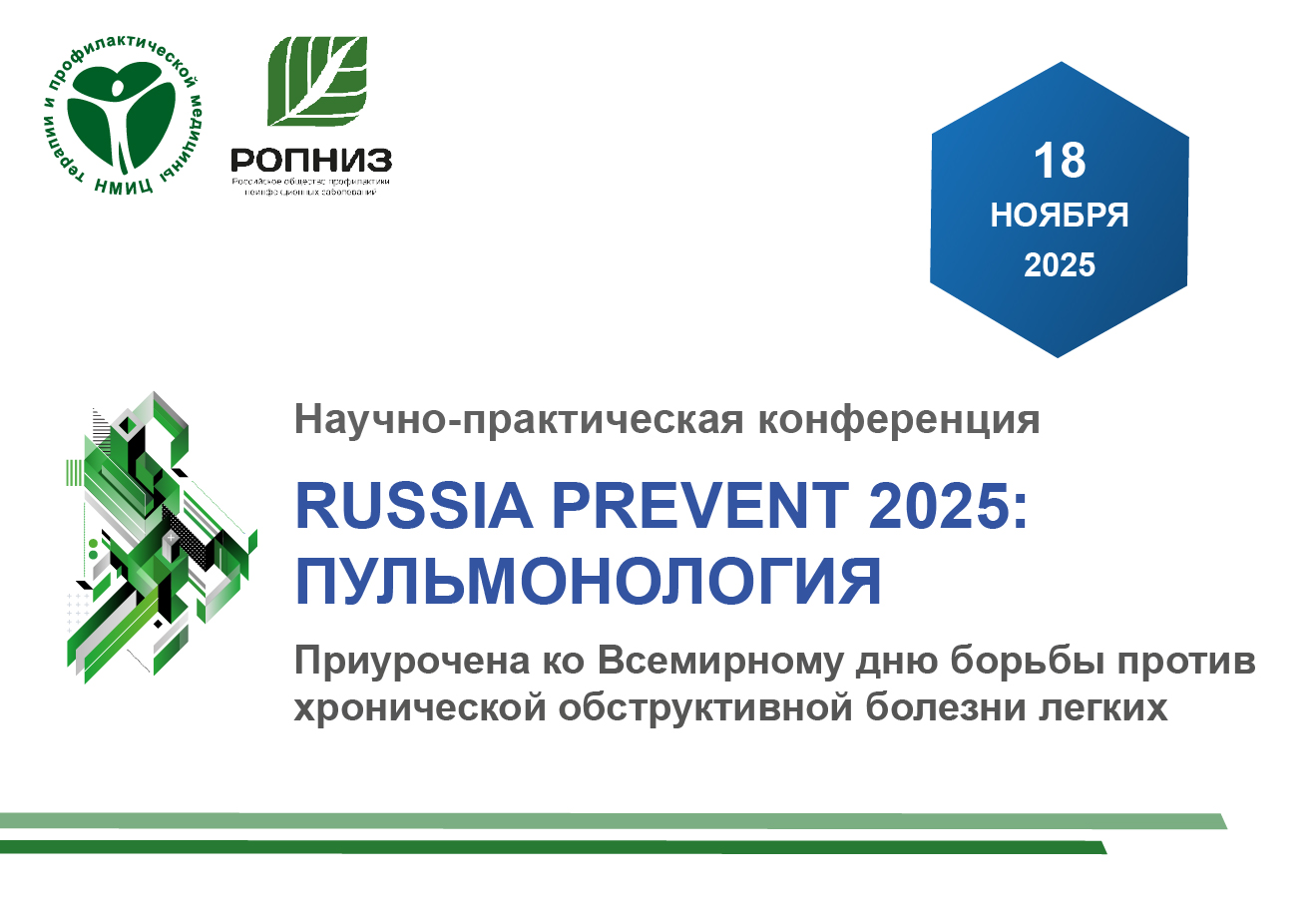Early cardiovascular multimorbidity in out- and in-patient care: age characteristics and medication therapy (data from the REKVAZA and REKVAZA-CLINIC registries)
https://doi.org/10.15829/1728-8800-2020-2672
Abstract
Aim. To assess the age and sex characteristics, comorbidities and medication therapy in patients with early cardiovascular multimorbidity in out- and in-patient care.
Material and methods. The REKVAZA registry includes 3,690 patients with hypertension (HTN), coronary artery disease (CAD), heart failure (HF), atrial fibrillation (AF) and their combinations, who applied to primary care facilities in Ryazan in 2012-2013. The hospital registry REKVAZA-CLINIC included 17,018 patients hospitalized due to cardiovascular disease (CVD) at the National Medical Research Center for Therapy and Preventive Medicine from April 2013 to March 2020. The groups of patients with early cardiovascular multimorbidity were compared according to two criteria: criterion 1 — age 18-49 years; criterion 2 — the age of men, 18-54 years; women, 18-64 years. The structure of CVD and related diseases, as well as cardiovascular therapy were analyzed.
Results. The proportion of persons with early cardiovascular multimorbidity from the total number of patients with cardiovascular multimorbidity was as follows: using criterion 1 — 4,9% (145/2959) and 4,94% (571/11557) (p=0,66), criterion 2 — 29,0% (859/ 2959) and 18,8% (2168/11557) (p<0,0001), respectively. Using criterion 2, in contrast to criterion 1, the proportion of men with early multimorbidity was 2,7 times less in the REKVAZA registry (17,1 vs 45,5%; p<0,0001) and 1,8 times less in the REKVAZA-CLINIC registry (44,2 vs 80,9%; p<0,0001). Among individuals with >2 CVDs (HTN, CAD, HF, AF, myocardial infarction, acute cerebrovascular accident), the proportion of individuals with early development of each of the listed diseases was significantly higher in the out- and in-patient registries, when using criterion 2 (14-29%) compared to criterion 1 (2-2,5%). Among patients with early onset of CVD in the outpatient registry, when criteria 1 and 2 were used, the proportion of patients with cardiovascular multimorbidity was 41,8 and 62,7% (p<0,0001), respectively; in the inpatient registry — 34,1 and 45,5% (p<0,0001). That is, at the age of <50 years> 1/3 of patients were found to have combined CVDs. Using criterion 2, compared with criterion 1, the proportion of persons with HTN and concomitant CVD among all patients with early HTN was 1,5 times higher (62,8 vs 41,6%; p<0,0001) in the outpatient register and 1,3 times higher in the inpatient one (48,9 vs 37,5%; p<0,0001). The proportions of persons with HTN in combination with other CVDs were among all hypertensive patients aged <45 and <40 years: in the outpatient registry, 35,5% (61/172) and 33,3% (38/114) cases, respectively, and in the inpatient — 27,8% (215/772) and 26,5% (95/359), respectively. According to the data of both out- and inpatient registries, in patients with early development of HTN (<50 years of age) and concomitant CVDs, compared with those without such a combination, there was a greater number of noncardiac diseases (18,3 vs 7,0%; p=0,001), diabetes (12,9 vs 4,7%; p<0,0001), respectively. In the inpatient registry, in addition to diabetes, there was a greater proportion of people with gastrointestinal diseases (78,7 vs 73,2%; p=0,02) and obesity (37,9 vs 30,3%; p=0,004). Among patients <50 years of age, the prevalence of those taking appropriate medications was higher than in the group of patients meeting criterion 2 — 68,0% vs 63,2%, respectively (p=0,03).
Conclusion. Early cardiovascular multimorbidity in the REKVAZA and REKVAZA-CLINIC registries was detected in 14-29% of the total number of combined CVD cases when using criterion 2 and only in 2-5% when using criterion 1. However, in relation to the total number of patients with early CVD development, individuals with cardiovascular multimorbidity make up the majority. It is preferable to use age <50 years as a criterion for early cardiovascular multimorbidity. But the criterion for the early development of HTN combined with other CVDs is appropriate to consider the age <40 years. Persons with early cardiovascular multimorbidity, especially at the age of 18-49 years, are the target group for the implementation of preventive measures.
About the Authors
E. Yu. AndreenkoRussian Federation
Moscow
M. M. Lukyanov
Russian Federation
Moscow
S. S. Yakushin
Russian Federation
Ryazan
A. N. Makoveeva
Russian Federation
Moscow
A. N. Vorobiev
Russian Federation
Ryazan
K. G. Pereverzeva
Russian Federation
Ryazan
E. V. Kudryashov
Russian Federation
Moscow
V. G. Klyashtorny
Russian Federation
Moscow
V. A. Dindikova
Russian Federation
Moscow
A. A. Smirnov
Russian Federation
Moscow
S. A. Boytsov
Moscow
O. M. Drapkina
Russian Federation
Moscow
References
1. Would Health Organization Mortality Database. http://www.who.int/healthinfo/mortality_data/en/.Published2018. Accessed June 25, 2019.
2. Barbarash OL, Boytsov SA, Denisov IN, et al. Comorbidities in clinical practice algorithms for diagnostics and treatment. Cardiovascular Therapy and Prevention. 2019;18(1):5-66. (In Russ.) doi: 10.15829/1728-8800-2019-1-5-66.
3. Glynn LG, Buckley B, Reddan D, et al. Multimorbidity and risk among patients with established cardiovascular disease: A cohort study. Br J Gen Pract. 2008;58(552):488-94. doi:10.3399/bjgp08X319459.
4. Di Angelantonio E, Kaptoge S, Wormser D, et al. Association of cardiometabolic multimorbidity with mortality. J Am Med Assoc. 2015;314(1):52-60. doi:10.1001/jama.2015.7008.
5. Violan C, Foguet-Boreu Q, Flores-Mateo G, et al. Prevalence, determinants and patterns of multimorbidity in primary care: A systematic review of observational studies. PLoS one. 2014;9(7):e102149. doi:10.1371/journal.pone.0102149.
6. Marengoni A, Fratiglioni L. Disease clusters in older adults: Rationale and need for investigation. J Am Geriatr Soc. 2011;59(12):2395-6. doi:10.1111/j.1532-5415.2011.03687.x.
7. Espeland MA, Crimmins EM, Grossardt BR, et al. Clinical trials targeting aging and age-related multimorbidity. J Gerontol A Biol Sci Med Sci. 2017;72(3):355-361. doi:10.1093/gerona/glw220
8. Lazebnik LB, Vertkin AL, Konev YuV, et al. Aging: Professional Medical Approach (National Leadership). Moscow. Exmo, 2014. 320 p. (In Russ.) SBN: 978-5-699-68589-9.
9. Wilmot KA, O’Flaherty M, Capewell S, et al. Coronary heart disease mortality declines in the United States from 1979 through 2011: Evidence for stagnation in young adults, especially women. Circulation. 2015; 132(11):997-1002. doi:10.1161/CIRCULATIONAHA.115.015293.
10. Lipscombe LL, Hux JE. Trends in diabetes prevalence, incidence, and mortality in Ontario, Canada 1995-2005: a population-based study. Lancet. 2007;369(9563):750-756. doi: 10.1016/S0140-6736(07)60361-4.
11. Gruneir A, Bronskill SE, Maxwell CJ, et al. The association between multimorbidity and hospitalization is modified by individual demographics and physician continuity of care: A retrospective cohort study. BMC Health Serv Res. 2016;16(1):154. doi:10.1186/s12913-016-1415-5.
12. Violan C, Foguet-Boreu Q, Roso-Llorach A, et al. Burden of multimorbidity, socioeconomic status and use of health services across stages of life in urban areas: A cross-sectional study. BMC Public Health. 2014; 14(1):530. doi:10.1186/1471-2458-14-530.
13. Rocca WA, Boyd CM, Grossardt BR, et al. Prevalence of multimorbidity in a geographically defined American population: Patterns by age, sex, and race/ethnicity. Mayo Clin Proc. 2014;89(10):1336-49. doi:10.1016/j.mayocp.2014.07.010.
14. Barnett K, Mercer SW, Norbury M, et al. Epidemiology of multimorbidity and implications for health care, research, and medical education: A cross-sectional study. Lancet. 2012;380(9836):37-43. doi:10.1016/S0140-6736(12)60240-2.
15. Piepoli MF, Hoes AW, Agewall S, et al. 2016 2016 European Guidelines on cardiovascular disease prevention in clinical practice: The Sixth Joint Task Force of the European Society of Cardiology and Other Societies on Cardiovascular Disease Prevention in Clinical Practice (constituted by representatives of 10 societies and by invited experts)Developed with the special contribution of the European Association for Cardiovascular Prevention & Rehabilitation (EACPR). Eur Heart J. 2016;37(29):2315-2381. doi:10.1093/eurheartj/ehw106.
16. Cardiovascular prevention 2017 National guidelines. Russian Journal of Cardiology. 2018;23(6):7-122. (In Russ.) doi:10.15829/1560-4071-2018-6-7-122.
17. 17 Williams B, Mancia G, Spiering W, et al. 2018 ESC/ESH Guidelines for the management of arterial hypertension: The Task Force for the management of arterial hypertension of the European Society of Cardiology and the European Society of Hypertension: The Task Force for the management of arterial hypertension of the European Society of Cardiology and the European Society of Hypertension. J Hypertens. 2018.36(10):1953-2041. doi:10.1097/HJH.0000000000001940.
18. Boytsov SA, Martsevich SY, Kutishenko NP, et al. Registers in cardiology: Their principles, rules, and real-word potential. Cardiovascular Therapy and Prevention. 2013;12(1):4-9. (In Russ.) doi:10.15829/1728-8800-2013-1-4-9.
19. Andreenko EY, Lukyanov MM, Yakushin SS, et al. Young ambulatory patients with cardiovascular diseases: Age and gender characteristics, comorbidity, medication and outcomes (according to RECVASA register). Cardiovascular Therapy and Prevention. 2019;18(6):99-106. (In Russ.) doi:10.15829/1728-8800-2019-6-99-106.
20. Boytsov SA, Luk’yanov MM, Yakushin SS, et al. Cardiovascular Diseases Registry (Recvaza): Diagnostics, Concomitant Cardiovascul ar Pathology, Comorbidities and Treatment in the Real Outpatient-Polyclinic Practice. Cardiovascular Therapy and Prevention. 2014;13(6):44-50. (In Russ.) doi:10.15829/1728-8800-2014-6-44-50.
21. Loria CM, Liu K, Lewis CE, et al. Early Adult Risk Factor Levels and Subsequent Coronary Artery Calcification. The CARDIA Study. J Am Coll Cardiol. 2007;49(20):2013-20. doi: 10.1016/j.jacc.2007.03.009.
22. Andersson C, Vasan RS. Epidemiology of cardiovascular disease in young individuals. Nature Rev Cardiol. 2018;15(4):230-40. doi:10.1038/nrcardio.2017.154
23. Naessens JM, Stroebel RJ, Finnie DM, et al. Effect of multiple chronic conditions among working-age adults. Am J Manag Care. 2011;17(2):118-22.
24. Lochner KA, Cox CS. Prevalence of multiple chronic conditions among medicare beneficiaries, United States, 2010. Prev Chronic Dis. 2013;10:E61. doi:10.5888/pcd10.120137
25. Juanatey JR, Ezquerra EA, Vidal JV, et al. The Role of High Blood Pressure in Cardiac Diseases in Spain. The CARDIOTENS Study 1999. Rev Esp Cardiol (Spain). 2001;54:139-49. (In Spain). doi:10.1157/03008932054000220010139.
26. Kivimaki M, Kuosma E, Ferrie JE, et al. Overweight, obesity, and risk of cardiometabolic multimorbidity: pooled analysis of individual-level data for 120 813 adults from 16 cohort studies from the USA and Europe. Lancet Public Health. 2017;2(6):e277-e285. doi:10.1016/S2468-2667(17)30074-9.
Review
For citations:
Andreenko E.Yu., Lukyanov M.M., Yakushin S.S., Makoveeva A.N., Vorobiev A.N., Pereverzeva K.G., Kudryashov E.V., Klyashtorny V.G., Dindikova V.A., Smirnov A.A., Boytsov S.A., Drapkina O.M. Early cardiovascular multimorbidity in out- and in-patient care: age characteristics and medication therapy (data from the REKVAZA and REKVAZA-CLINIC registries). Cardiovascular Therapy and Prevention. 2020;19(5):2672. (In Russ.) https://doi.org/10.15829/1728-8800-2020-2672

























































